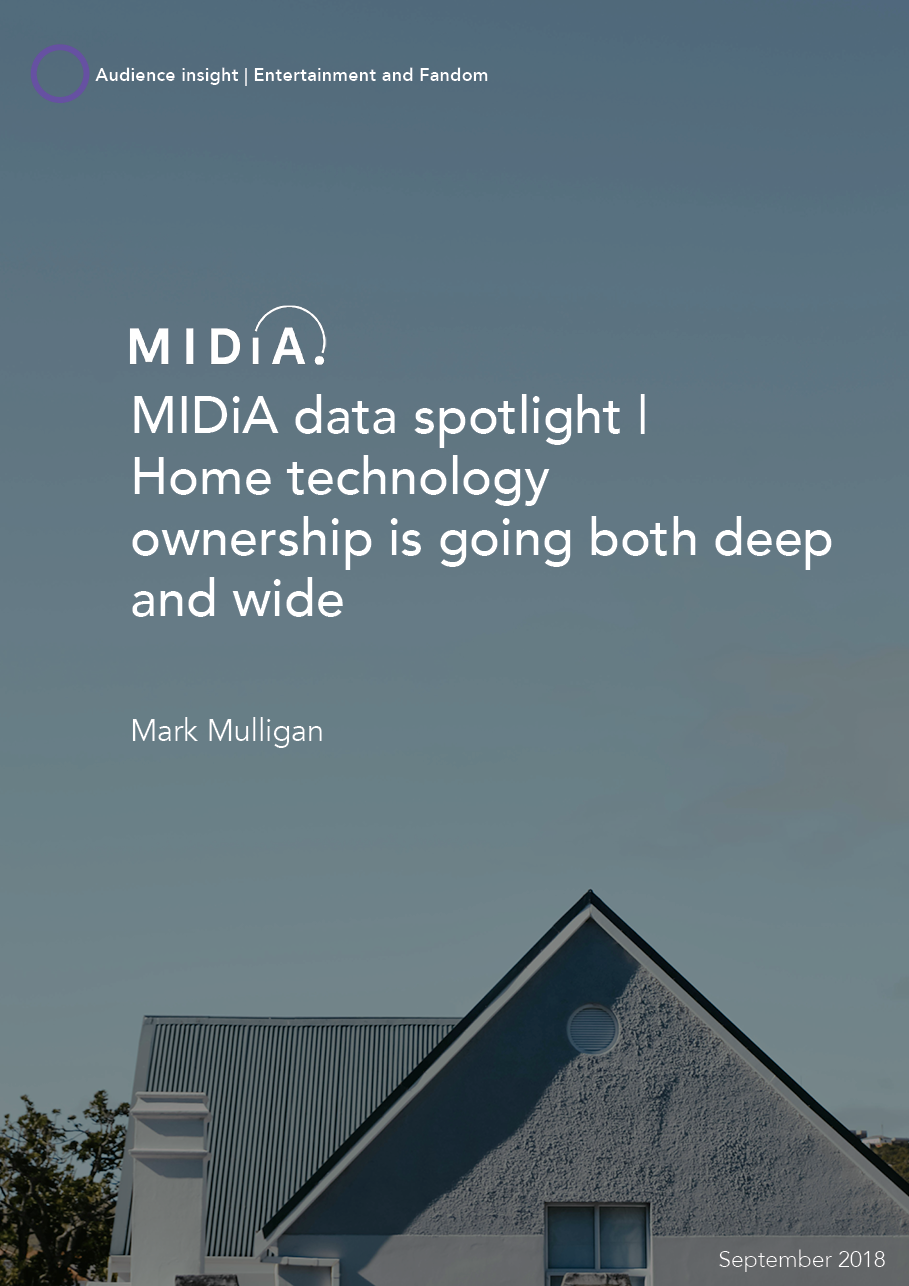MIDiA Data Spotlight: Home Technology Ownership is Going Both Deep and Wide

Get full access to this report and assets
If you are interested this report, or related reports such as MIDiA Data Spotlight: Esports Emerging Markets Driving Audience, MIDiA Data Spotlight: Music Consumption YouTube and Radio Lead the Pack and MIDiA Data Spotlight: Music Listening Car Leads the Way get in touch today to enquire about a report bundle.
This is part of MIDiA’s data snapshot series in which we spotlight curated consumer datasets.
Figure The Digital Home is Becoming Increasingly Sophisticated Household Ownership of Digital Technology, 2018
The ‘digital home’ was a term that rose to prominence in the mid 2000s as the first generation of home router centred devices started to come to market at scale. It proved to be a false dawn, but the push has been resuscitated under the banner of the ‘connected home’. While many of the connected home aspirations are as unrealistic as the original digital home ambitions were, it is clear that the average consumer’s home is becoming increasingly sophisticated, with a wide variety of devices owned.
Smart TVs and games consoles are the two most widely owned devices – and consumer penetration respectively. Games consoles are an old and stable category, within which Sony Playstation accounts for of ownership, Microsoft Xbox and Nintendo Smart TVs are clearly a much more recent development and are building solid momentum, though not all of these sets are being used as smart TVs by their owners.
Streaming is playing a growing role in consumers’ homes, as evidenced by smart speakers (e.g. Amazon Echo, media streamers (e.g. Apple TV, wireless headphones (e.g. Bose and wireless speakers (e.g. Sonos,
Emerging technologies such as Smartwatches (e.g. Apple Watch, VR headsets (e.g. Oculus Rift and interactive car dashboards remain at niche levels of adoption. Of the three, VR is the least likely to push into penetration levels similar to wireless speakers.
